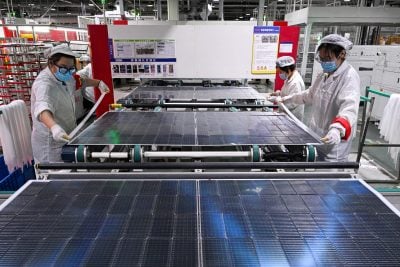When seeking a good return on investment, a toilet is probably the last place you would look. A toilet is more often associated with flushing money away. But failure to appreciate the value of human waste is a missed opportunity.
According to the World Bank, every $1 invested in sanitation yields a $5 return. Investing in sanitation by encouraging communities to build toilets and teaching children good hygiene practices not only ensures health and dignity; it’s a potential money spinner. In an international consumer context where people own more cellphones (6.4bn) than toothbrushes (4.2bn), a toilet is essential and affordable, provided there is sufficient demand.
The cost of ignoring sanitation
Globally some 2.5bn people have no access to a hygienic toilet – that’s one in every three people. In sub-Saharan Africa, 69% of people do not have improved sanitation. Population growth and urbanisation increase the urgency of the need for access to sanitation. The Millennium Development Goal (MDG) target to halve the proportion of people living without sanitation is off track for 2015 and hundreds of millions of people living in developing countries – particularly women, children, the poor and the marginalised – are bearing the burden.
In 2008, African governments signed the eThekwini Declaration, which committed them to spend at least 0.5% of their GDP on sanitation and hygiene, and to put in place separate budget lines for water and sanitation spending to improve accountability and track progress. Five years on, only one country, Equatorial Guinea, has been confirmed to have met the 0.5% funding commitment.
The implications of this failure to honour financial commitments are plenty. For those that have no household latrine whatsoever, open defecation is not just an inconvenience; it’s a daily threat to their health and that of their family, as well as the wider community.
Women and girls are particularly vulnerable given that poor sanitation exposes females to the risk of assault, and when schools cannot provide clean, safe toilets, sanitary pads and changing rooms, girls’ attendance drops. Many girls stay away from school due to fear of staining, menstrual cramps and the problems of managing menstruation with only poor sanitation facilities at their schools. In Africa it is estimated that within four years of high school, each girl loses 156 learning days, that’s one sixth of learning time.
The economic cost of inadequate sanitation in sub-Saharan Africa is more than $30bn, according to the World Bank. Time out from work due to illness associated with poor sanitation means a lack of productivity and lack of earnings. Universal access to sanitation and water would free up 74bn working days per year. Lower school and work productivity contribute to negative economic impacts of at least 3% of GDP.
Every day, around 2,000 children die a premature death due to diarrhoea caused by a lack of access to safe toilets and clean water. According to the World Health Organisation, diarrhoeal disease consumes a huge share of health costs because it is so widespread – at any given time roughly one third of the world’s hospital beds are occupied by people suffering from diarrhoeal disease and other illnesses associated with inadequate sanitation and water supply.
Health care costs include consultation, medication, transport and hospitalisation. If everyone had access to adequate sanitation and water services, patients would save themselves $565m and the world’s health sectors would save around $12bn every year.
Each person practising open defecation spends almost 2.5 days a year finding a private location to defecate, a heavy time burden with grave productivity implications. Although sanitary facilities are common in the workplace, access to a hygienic toilet is often more difficult for women and girls who tend to be home-based.
Children cannot learn if they are too weak from diarrhoea-related malnutrition or intestinal worms, diseases often contracted through insanitary conditions at the school. According to a UNICEF study, only one third of primary schools in sub-Saharan Africa have adequate sanitation facilities. The result is that sanitation-borne diseases spread and children either cannot concentrate in class, or stay home.
Schools are one of the best places to teach good hygiene and the presence of clean toilets separated for boys and girls is a big pull for school attendance. Without a clean private place to attend to sanitary needs at school, many girls miss days when they begin to menstruate. Educated girls tend to marry later and have fewer, healthier children. The resulting impact on economic growth means an investment in school sanitation brings long-term rewards.
Want to continue reading? Subscribe today.
You've read all your free articles for this month! Subscribe now to enjoy full access to our content.
Digital Monthly
£8.00 / month
Receive full unlimited access to our articles, opinions, podcasts and more.
Digital Yearly
£70.00 / year
Our best value offer - save £26 and gain access to all of our digital content for an entire year!
 Sign in with Google
Sign in with Google 



